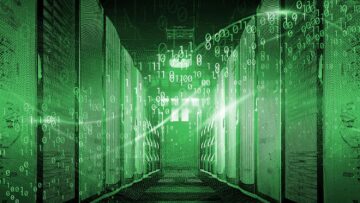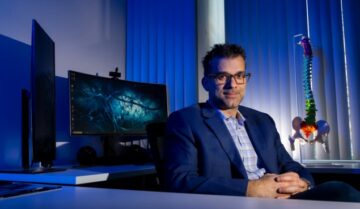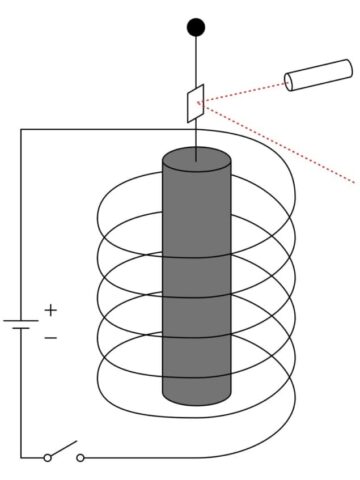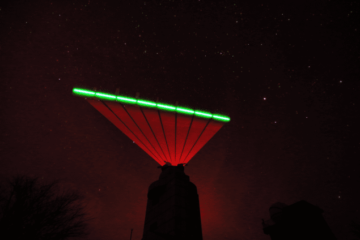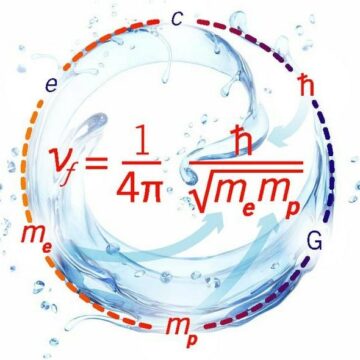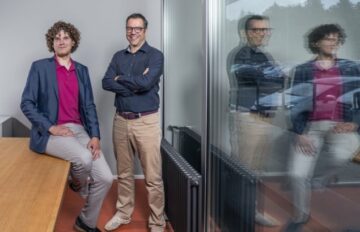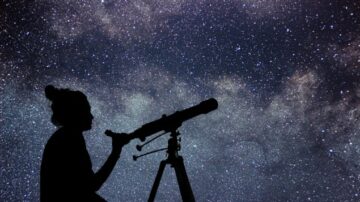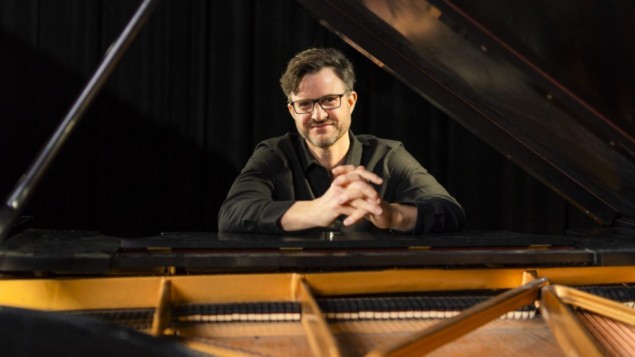
Fermilab, the US particle-physics facility on the outskirts of Chicago, has just named its guest composer for 2024. According to the lab, the pianist Mischa Zupko “will create music to interpret particle science in new ways” by collaborating with Fermilab scientists; the Civitas Ensemble chamber musicians; and the saxophonist Timothy McAllister.
Fermilab goes on to say that Zupko “is eager to work with Fermilab scientists to musically explore projects such as the Deep Underground Neutrino Experiment”. His goal is to create a physics-inspired composition that will be recorded and then released in 2026.
Looking forward to the task ahead, Zupko says, “From what I have come to understand, the ability to imagine, in a physical sense, phenomena relating to the behaviour and interaction of elementary particles is impossible, but the attempt to imagine, is where the beauty lies”.
This is not the first time that Zupko has been inspired by science. In 2016 he recorded Eclipse: Chamber Music of Mischa Zupko, with violinist Sang Mee Lee and cellist Wendy Warner. This work explored musical aspects of the universe; cosmic phenomena; and mathematical models. The previous year, a recording called “From twilight” was release by Zupko. It was inspired by the evening sky.
Poet goes round the LHC
Staying on the subject of physics-inspired artists, I have just listened to a programme on BBC Radio 4 in which the British poet Paul Farley visits the Large Hadron Collider (LHC) at CERN in Geneva. This is the final episode in a five-part series called In the Loop, in which Farley explores structures in which people or things go round in circles.
At the LHC, Farley talks to the physicists Melissa Yexley and Simon Albright about how the collider works and why it is smashing particles together at very high energies. The pair describe the Standard Model of particle physics as we know it, and how research at facilities like the LHC could reveal new physics beyond the Standard Model.
The discussion of loops in physics is then broadened out by Paddy Regan, who talks to Farley about the orbits of the planets and the role that angular momentum plays in keeping the solar system moving. The episode then moves away from physics and into the world of dance, when the dance teacher Karen Michaelsen talks about the social relevance of linking hands and dancing in circles.
While I didn’t learn much about particle or planetary physics from the programme, I was fascinated by the various discussions of the roles that loops play in human thought.
In the Loop was first broadcast last year and in the addition to the LHC, Farley has visited a traffic roundabout; a stone circle; and the imaginary loops of the artist MC Escher. There is also an episode about rollercoasters in which I learned the amazing fact that the Grand National rollercoaster in Blackpool is one of two surviving “Möbius loop” rollercoasters.
- SEO Powered Content & PR Distribution. Get Amplified Today.
- PlatoData.Network Vertical Generative Ai. Empower Yourself. Access Here.
- PlatoAiStream. Web3 Intelligence. Knowledge Amplified. Access Here.
- PlatoESG. Carbon, CleanTech, Energy, Environment, Solar, Waste Management. Access Here.
- PlatoHealth. Biotech and Clinical Trials Intelligence. Access Here.
- Source: https://physicsworld.com/a/fermilabs-guest-composer-is-inspired-by-neutrinos-poetry-and-physics-collide-at-the-lhc/
- :has
- :is
- :not
- :where
- 2016
- 2026
- a
- ability
- About
- accelerator
- According
- addition
- ahead
- also
- amazing
- an
- and
- Angular
- artist
- Artists
- AS
- aspects
- At
- attempt
- away
- bbc
- BE
- Beauty
- been
- behaviour
- Beyond
- British
- broadcast
- but
- by
- called
- CERN
- Chamber
- chicago
- Circle
- circles
- CO
- collaborating
- Collide
- come
- Composer
- composition
- could
- courtesy
- create
- dan
- dance
- Dancing
- deep
- describe
- discussion
- discussions
- eager
- elementary
- episode
- evening
- explore
- Explored
- explores
- facilities
- Facility
- fact
- final
- First
- first time
- For
- Forward
- from
- Geneva
- Go
- goal
- Goes
- Guest
- Hands
- Have
- he
- High
- his
- How
- HTTPS
- human
- i
- imaginary
- imagine
- impossible
- in
- information
- inspired
- interaction
- into
- issue
- IT
- ITS
- jpg
- just
- karen
- keeping
- Know
- lab
- large
- Last
- Last Year
- LEARN
- learned
- Lee
- like
- linking
- loops
- mathematical
- max-width
- mc
- model
- models
- Momentum
- moves
- moving
- much
- Music
- musical
- musicians
- Named
- National
- neutrinos
- New
- of
- on
- ONE
- or
- out
- pair
- particle
- Paul
- People
- physical
- Physics
- Physics World
- Planets
- plato
- Plato Data Intelligence
- PlatoData
- Play
- plays
- poet
- Poetry
- previous
- programme
- projects
- Radio
- recorded
- recording
- release
- released
- relevance
- research
- reveal
- Role
- roles
- round
- s
- say
- says
- Science
- scientists
- sense
- Series
- Simon
- sky
- Social
- solar
- Solar system
- standard
- STONE
- structures
- subject
- such
- system
- Talks
- Task
- teacher
- that
- The
- the world
- then
- There.
- things
- this
- thought
- thumbnail
- time
- to
- together
- traffic
- true
- two
- underground
- understand
- Universe
- us
- various
- very
- visited
- Visits
- Warner
- was
- we
- What
- when
- which
- WHO
- why
- Wikipedia
- will
- with
- Work
- works
- world
- year
- zephyrnet

